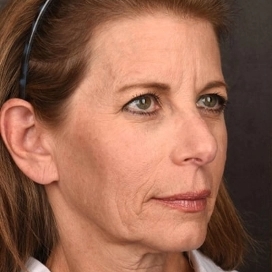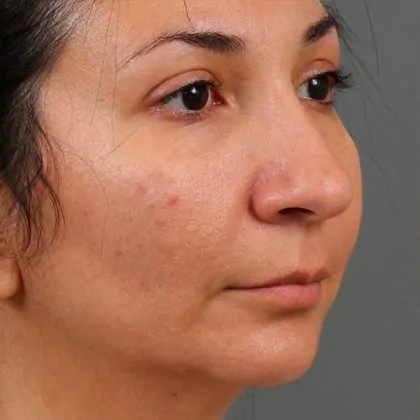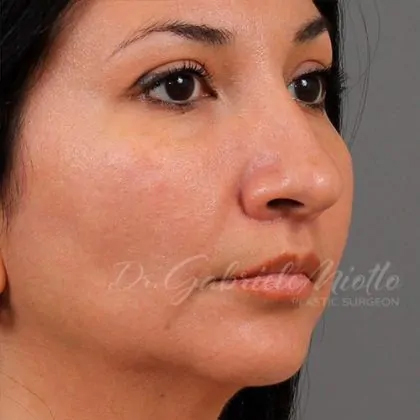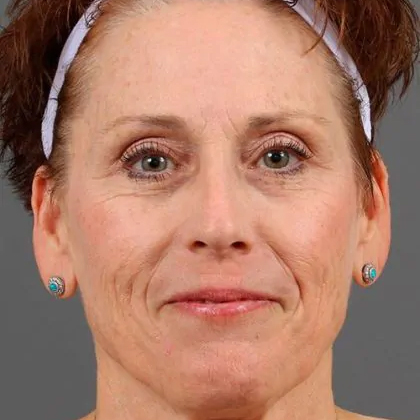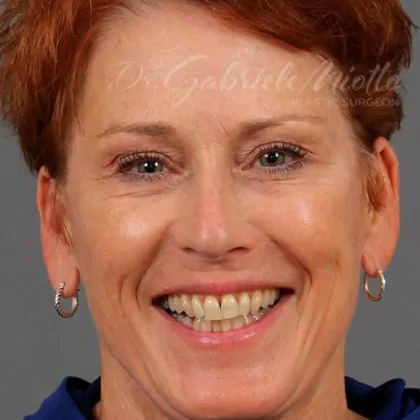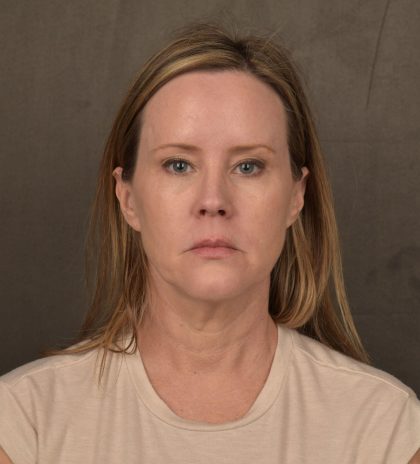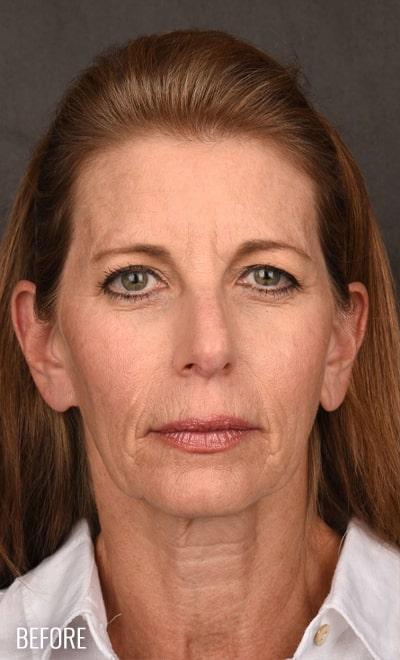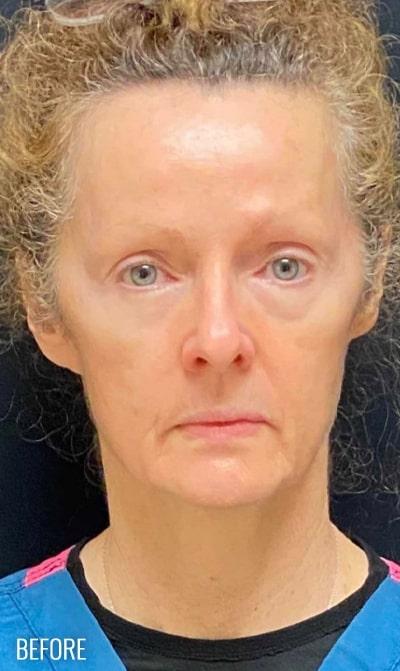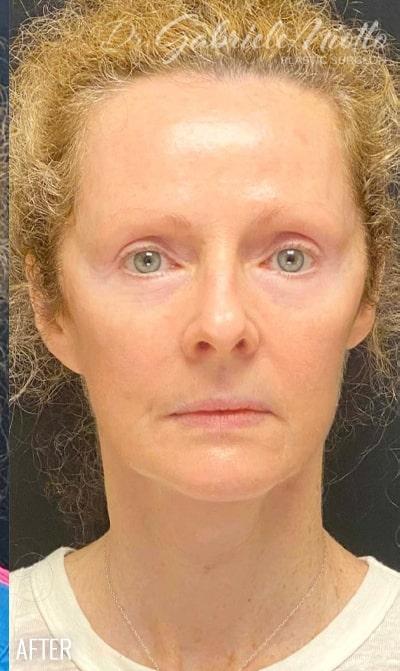Facial Fat Transfer
Conveniently located to serve the areas of Atlanta, GA

As time goes by, many of us lose the fullness in our faces. We begin to see cheek hollowing and temple hollowing, thinner lips and flatter cheeks. Laugh or smile lines appear around the lips. Reduced volume in certain facial areas is an inevitable part of the aging process, but with fat grafting to the face we can build back the volume, minimize wrinkles and revitalize the appearance.
Fat grafting is an excellent surgical procedure done under local or general anesthesia to restore facial volume lost through the years and also to bring a little more symmetry to the face. Patients go on to see noticeable results with natural looking, fuller cheeks, temples, lips and eyelids.
Contents
- 1 Before and After Photos
- 2 Patient story
- 3 After the procedure
- 4 General preoperative recommendations
- 5 General postoperative recommendations
- 6 Activity
- 7 Bathing
- 8 Returning to work
- 9 Diet
- 10 Final results
- 11 Facial fat transfer
- 12 Fat grafting
- 13 Where does Dr. Gabriele C. Miotto harvest the fat for transfer from?
- 14 Autologous fat transfer
- 15 Fat grafting areas
- 16 Who should consider facial fat transfer procedure?
- 17 Anesthesia
- 18 Transportation policy
- 19 What to expect
- 20 Pre-op
- 21 Facial fat grafting
- 22 What to expect
- 23 Recovery
- 24 Preparing
- 24.1 The following herbal supplements and vitamins must be avoided for at least 10 days before surgery
- 24.2 Medications that need to be avoided at least 7 to 10 days before the day of surgery include
- 24.3 For at least 5 days before surgery, patients must avoid taking non-steroidal anti-inflammatory drugs (nsaids). drugs to avoid include
- 25 Avoid These Lifestyle Choices
- 26 Transportation policy
- 27 Recovering
- 28 Bathing and showering
- 29 Returning to work
- 30 Diet
- 31 Healthy proteins
- 32 Cooked vegetables
- 33 Results
- 34 How painful is the facial fat grafting procedure?
- 35 Potential risks
- 36 How much does facial transfer of adipose tissue cost?
- 37 FAQ
- 37.1 What is fat grafting?
- 37.2 Do I need fat transfer to the face?
- 37.3 How is the fat grafting procedure performed?
- 37.4 Do I need to be sedated during fat grafting to the face?
- 37.5 Does fat grafting hurt?
- 37.6 How long does fat grafting last in the face?
- 37.7 What facial fillers can be used other than my body fat?
- 37.8 Is there non-surgical face contouring instead of fat grafting?
- 37.9 Will others see my fat grafting incisions?
- 37.10 What is the fat grafting surgery recovery time?
- 37.11 After fat grafting surgery how can i have healthy skin?
- 37.12 How can I get started to learn more?
- 37.13 Can I drive home after a facial fat transfer surgery?
- 37.14 How long should I expect the bruising to last after a facial fat transfer?
- 37.15 How much downtime would I need after a facial fat transfer?
- 37.16 When will I look normal again after a facial fat transfer?
- 37.17 Where does fat from a facial fat transfer come from?
Before and After Photos
Patient story
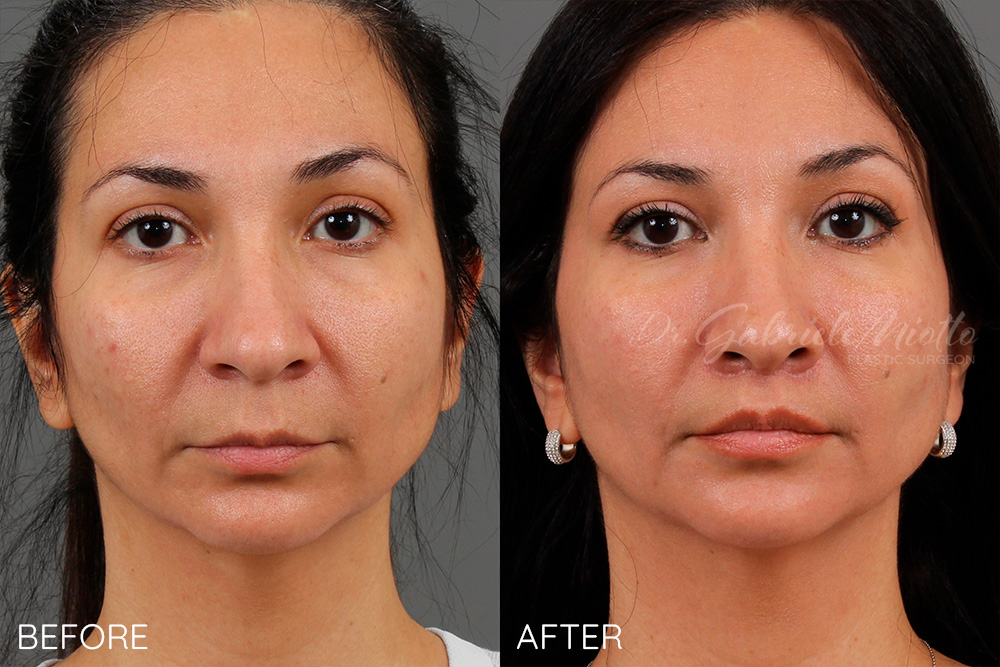
This is a patient in her 30s who wanted an improvement in her facial contouring, chin projection and lip proportions. We performed Fat Grafting To Cheeks, Chin, Lip Lift.
After the procedure
Facial fat grafting is an outpatient surgery done under general or local anesthesia. After the procedure, there will be visible fine skin sutures in the incisions, some bruising and swelling.
Facial fat grafting is not a painful procedure, but mild discomfort and feeling of tightness in the face and neck areas are expected for a few days to a few weeks after surgery. Bruising and swelling are usually the cause of the discomfort. However, it can be treated with preoperative and postoperative medication and supplementation, ice and anti-inflammatories. Swelling can be minimal or more intense depending on how many procedures need to be done in surgery to make the results the most beautiful and natural possible.
Return to normal daily activities between 1-2 weeks. Expect at least 8 weeks for committing to major social events as residual swelling can remain for some patients after surgery. We are all different, so it is hard to predict who will get more or less swelling and bruising.
General preoperative recommendations
What to avoid before the procedure
- DO NOT take any aspirin for 7-10 days before your scheduled procedure. Do not take NSAIDS (Aleve, Motrin, Ibuprofen) for 5 days before surgery. You may take Tylenol (Acetaminophen) if needed for aches or pains. Please contact the office at if you have any questions about any medications that you are taking or if you are prescribed aspirin by your cardiologist or Primary Care Provider (PCP).
- Discontinue Vitamin E 10 days before surgery.
- Avoid the following herbal supplements for 10 days before surgery: Echinacea, Ephedra / Phentermine (used for weight loss), Feverfew, Fish Oils, Garlic, Ginkgo Biloba, Goldenseal, Kava-Kava, Licorice, Saw Palmetto, St. John’s Wort and Valerian.
- Stop Smoking. The harmful effects of smoking can cause tissue death, infection, and open wounds. It also makes you age faster!
- Alcohol can promote swelling of the surgical area and it is best to avoid alcohol intake for at least one week before surgery.
What to take before surgery
- Dr Miotto will recommend medications and supplements during your consultation to speed up recovery after surgery.
General postoperative recommendations
- If the procedure is done under general anesthesia, you MUST have a responsible adult to transport you home and stay with you for a full twenty-four hours after your surgery.
- You will be unable to drive if you are taking narcotics.
- It is recommended to elevate the head with two to three pillows after all facial procedures.
- Your initial post-operative appointment will be scheduled by your Patient Care Coordinator; please make arrangements to have reliable transportation for these appointments as you will not be permitted to drive until twenty-four hours after general anesthesia and when you are no longer taking narcotic pain medications.
Activity
- Please refrain from physical activity that will increase your heart rate or blood pressure for 1 week after surgery. However, bed rest is NOT recommended, and you should be walking at normal pace after the procedure.
Bathing
- You can shower twenty-four hours after surgery. You may clean the incisions as instructed by Dr Miotto or her nurses after the procedure.
- Do not submerge yourself into a tub/pool until all wounds have healed (usually in 2 weeks).
- Do not scrub the surgical sites, however you can allow soapy water to run over them.
- Avoid lotions on the surgical sites for 1 week, but you can moisturize any other areas as desired.
Returning to work
- Recovery time will vary; however, most patients return to work within 1-2 weeks after the procedure, within one week you will have a feel for your specific limitations and will be able to determine how comfortable you will be with resuming your daily activities and workload.
Diet
- Immediately following surgery, it is best to eat bland, easily-digested food and avoid excess sugar and salt. Healthy proteins (eggs, lean meat, beans, nuts), rice, fruits and cooked vegetables (broccoli, peppers, sweet potatoes) will provide your body with nutrients essential for healing.
- Eat a few bites of food before taking pain medications as these can cause nausea.
- A diet low in sodium will help minimize swelling and water retention.
- Drink plenty of water! Drinking low sugar sports drinks and protein shakes are recommended.
Final results
- Keep in mind that our goal in aesthetic surgery is improvement and not perfection. You will be followed closely after surgery to assure that you heal well and have the best possible results.
- It can take months for the very final results of your surgery be apparent. After 12 weeks, you can expect your results to be mostly permanent. Expect subtle changes in swelling and healing (including the appearance of scarring) to continue to improve for up to twelve months.
- It is important for you to keep open communication with your physician and return for your follow up visits. We will take pre and post pictures along the way and look at the final results together.
Facial fat transfer
With time, many people lose the youthful-looking fullness in their face. Following the onset of facial hollowing, the temples may appear sunken-in, the cheeks might look flatter, the area beneath the eyes may be hollow and the lips frequently appear thinner. This volume loss also causes the development of lines and wrinkles. Although volume loss in the face is expected as part of the natural aging process, Plastic Surgeon and Expert Injector Dr. Gabriele C. Miotto, addresses these changes with facial fat grafting. During this plastic surgery procedure, she can build up the volume in the affected areas of the face, effectively reducing the visibility of wrinkles. In addition, Dr. Miotto fills in the areas that have lost volume, thus, rejuvenating the patient’s face.
Fat grafting
Facial fat grafting is a facial rejuvenation technique in which instead of using dermal fillers to add volume, the patient’s own adipose tissue (fat) is used.
During a facial grafting procedure with adipose tissue, Dr. Miotto harvests the tissue from another area of the patient’s body via liposuction.
Once collected, this adipose tissue is purified and processed for injection. Then, Dr. Miotto strategically injects the tissue into the areas of the patient’s face that appear hollow. She can also use this tissue to address lines and wrinkles.
Since an individual’s own adipose tissue offers a soft, natural-looking result with very little concern related to an allergic reaction, many consider this procedure to be one of the most biocompatible fillers available for facial rejuvenation. Furthermore, on many occasions the results attained with an autologous facial fat grafting procedure are permanent.
Where does Dr. Gabriele C. Miotto harvest the fat for transfer from?
The most common collection areas include the abdomen, inner thighs and hips.
Autologous fat transfer
As an experienced Expert Injector and Facial Plastic Surgeon Dr. Gabriele Miotto understands facial anatomy and structure. This knowledge is extremely important because it provides her with the ability to identify the correct location for injection and the appropriate injection depth for the areas being addressed.
To decrease the likelihood of attaining undesirable results or experiencing complications following this type of autologous grafting procedure, individuals need to ensure that the injector they choose is an expert, has extensive knowledge related to facial anatomy and structure as well as experience performing these kinds of facial rejuvenation procedures.
Fat grafting areas
At ME Plastic Surgery in Atlanta, adipose tissue grafting is used to address areas of the face that have lost volume.
Issues treated with autologous fat transfer include
- Hollowing in the forehead.
- Deep creases, especially those located in the forehead, including the vertical glabellar lines that develop above the nose and between the eyebrows.
- Temporal hollowing.
- Nasojugal grooves (i.e., tear-trough deformity), which are the depressions located between the nose and the eye. These depressions are usually 2 to 3 cm deep, running from the inner corner of the eyelid to the outer part of the cheek area.
- Nasolabial folds, which are also called smile or laugh lines, run from the outer corners of the nose to the outer corners of the mouth.
- Supraorbital hollowing refers to the loss of volume that occurs above the eye sockets where the eyebrows are located.
- Marionette lines are the vertical lines that run from the outer corners of the mouth to the chin. These lines can also cause sagging in the lower portion of the face.
- Periorbital hollowing, which refers to volume loss beneath the eye.
- Jawline contouring (jowls).
- A weak chin.
- Deflated-looking lips.
- The vertical length of the lower eyelid increases with age, Dr. Miotto can address this issue during the adipose tissue transfer procedure.
At ME Plastic Surgery in Atlanta, Dr. Gabriele C. Miotto performs facial fat transfer surgery as an outpatient procedure. Following adipose tissue transfers, patients see immediate results.
Who should consider facial fat transfer procedure?
Individuals who are looking for a more permanent solution to facial hollowing than can be accomplished with dermal fillers may want to consider a facial grafting procedure using adipose tissue.
Anesthesia
At ME Plastic surgery patients may receive general anesthesia, which is the type of anesthesia that puts the patient fully asleep or local anesthesia with oral sedation, which places the patient in a semi-conscious state.
The local anesthesia with oral sedation is frequently referred to as twilight anesthesia because with this form of anesthesia, the patient can be awakened easily but will not remember much about the facial fat grafting procedure itself.
When patients are having several facial areas addressed, Dr. Miotto recommends either oral sedation combined with local anesthesia or general anesthesia.
When the patient is only having a small facial grafting procedure, he or she can remain awake during the transfer because Dr. Miotto can just use local anesthesia.
Dr. Gabriele Miotto always discusses the anesthesia options with her patients before the procedure.
Transportation policy
ME Plastic Surgery is dedicated to providing patients with safe, high-quality care, as such, for their own safety, patients are not permitted to use for-hire transportation services or public transportation following any procedure in which general anesthesia is used.
What to expect
Since the patients who receive general anesthesia during their facial grafting procedure are not be permitted to drive for 24 hours after their procedure, these patients need to bring a driver with them on the day of their surgery. Patients arriving without a driver will have to reschedule their facial grafting procedure using adipose tissue.
Patients should arrive for their facial transfer with adipose tissue procedure at least 15 minutes before their scheduled appointment. This allows plenty of time to complete any last-minute paperwork or gather information from the patient before his or her facial grafting procedure.
Facial grafting with adipose tissue is an excellent facial rejuvenation option. Besides rejuvenating the face, facial fat transfer can be used to make the patient’s face appear more symmetrical. After this procedure, patients enjoy noticeable, natural-looking results in the areas that received adipose tissue.
Pre-op
The patient is taken into the pre-op area. Dr. Gabriele C. Miotto will most likely visit the patient to answer any last-minute questions he or she has about the facial fat transfer procedure. In addition, Dr. Gabriele C. Miotto makes several markings on the patient’s face. She uses these markings as a guide during the patient’s facial grafting surgery.
Prior to surgery, the treatment areas are discussed with the patient. The areas that Dr. Miotto addresses during a facial transfer procedure using adipose tissue are those areas displaying the most hollowing.
Facial fat grafting
A facial grafting using adipose tissue has three steps: The harvesting of the adipose tissue, processing the tissue collected and then strategically transferring the processed tissue.
Patients who are only have a small area addressed may choose to remain awake during their procedure. These patients do not receive general or twilight anesthesia, but they will receive local anesthesia in the treatment areas.
Once the patient has received anesthesia and is comfortable, Dr. Gabriele C. Miotto harvests adipose tissue from the areas of the body that are usually considered problem areas, which include the abdomen, hips and thighs. Donation locations are discussed with the patient prior to his or her surgery.
After using liposuction to harvest the adipose tissue, Dr. Miotto prepares the tissue and purifies it. Now, the patient’s own tissue has been transformed into his or her natural filler.
Using very fine hollow tubes (i.e., cannulas), the adipose tissue is injected into the areas of the face that need additional volume.
What to expect
Once Dr. Miotto has completed transferring the adipose tissue, she uses fine sutures to close the incisions.
Patients should expect to have some inflammation and bruising.
Patients who experience the most swelling and bruising are those who have adipose tissue transferred to multiple areas of the face. However, by addressing every area that requires attention during a single transfer session, patients receive beautiful youthful-looking results that appear completely natural, rejuvenating the patient’s entire face.
Recovery
Directly after surgery the patient remains in the recovery area until he or she is fully awake. Once awake, the patient receives information about what to expect during recovery, caring for his or her face and when to return for the post-operative appointment. Any questions the patient has are also addressed.
A patient care coordinator schedules the patient’s post-operative appointment
ME Plastic Surgery’s Patient Care Coordinator schedules the patient’s post-operative appointment, which is scheduled for the following day, therefore, the patient is still unable to drive. He or she needs to find a trustworthy driver as public transportation or for-hire transportation services are not recommended until the 24-hour anesthesia restrictions have passed.
Once the post-op appointment is scheduled, the patient is released to his or her driver.
A tight sensation in the face and neck is common following this procedure
A tight feeling in the neck and face after this procedure is likely. Since each patient is unique and heals at his or her own pace, the length of time a patient experiences this sensation varies. This tight sensation can last just a few days or continue for several weeks. It is the inflammation and bruising that causes this feeling of discomfort.
Addressing inflammation and discomfort after a facial transfer using adipose tissue
Preoperative and postoperative medications in conjunction with supplementation can help reduce the amount of discomfort a patient experiences. In addition, regularly scheduled at-home cryotherapy treatments (treatment with ice packs) and anti-inflammatory medication (approved for use by Dr. Miotto) can greatly decrease the amount of inflammation a patient experiences. Reducing inflammation minimizes the tightness the patient feels on his or her neck and face.
Patients usually return to their normal activities at some point after a week or two.
To ensure that all the inflammation and bruising has subsided, patients should wait at least 8 weeks before making a commitment to attend major social events (e.g., a wedding, class reunion, etc.).
Preparing
To ensure each patient receives beautiful, natural-looking results, complications must be avoided, therefore, Dr. Gabriele C. Miotto takes every precaution necessary before, during and after treatment to accomplish this goal.
Prior to the facial fat transfer, patients need to avoid products and lifestyle choices that could cause a complication during or after surgery.
The following herbal supplements and vitamins must be avoided for at least 10 days before surgery
- Ginkgo Biloba
- Fish Oils
- Garlic
- Echinacea
- Goldenseal
- Saw Palmetto
- Valerian
- Kava-Kava
- Feverfew
- Phentermine / Ephedra (for weight loss)
- John’s Wort
- Licorice
- Vitamin E
Medications that need to be avoided at least 7 to 10 days before the day of surgery include
- Aspirin.
- Products that contain aspirin.
For at least 5 days before surgery, patients must avoid taking non-steroidal anti-inflammatory drugs (nsaids). drugs to avoid include
- Motrin (Ibuprofen).
- Aleve (Naproxen).
Patients who need to take medication for pain prior to surgery can safely take Tylenol (Acetaminophen, Non-Aspirin).
Patients with questions about a certain medication that they are taking, including aspirin prescribed by their Primary Care Physician or Cardiologist, should call ME Plastic Surgery at (404) 850-5851. For safety reasons, it is important to note that patients should never discontinue prescription medications of any kind without first receiving approval from the prescribing physician, Dr. Gabriele Miotto or Dr. Felmont Eaves.
Avoid These Lifestyle Choices
Stop using products that contain nicotine
Discontinue using products that contain nicotine (e.g., traditional cigarettes, chewing tobacco, e-cigarettes and smoking cessation products, etc.) for at least four weeks before and four weeks after surgery.
Following this recommendation is vital to the outcome of this procedure because continuing to use these products can lead to the development of an infection, open wounds due to slowed healing and tissue death. Furthermore, while all nicotine-containing products accelerate the signs of aging, when it comes to smoking traditional cigarettes, an individual can look up to 10 years older than he or she truly is.
Accelerated aging and slowed healing occur because the nicotine in these products causes blood vessels to narrow. By reducing the size of the blood vessels, the oxygenated, nutrient-rich blood takes longer to reach the incision sites, thus, slowing the healing process, which may result in open wounds, an infection or even necrosis (i.e., tissue death).
Avoid alcoholic beverages
Avoid alcoholic beverages for at least a week before the facial fat transfer.
Alcohol promotes inflammation, therefore, patients who consume alcohol within a week of surgery or during the recovery phase after surgery should expect to experience more inflammation than a patient who does not. This inflammation can lead to additional bruising and an increase in the tight sensation patients experience after this type of surgery.
To speed up the recovery process, Dr. Miotto recommends that her patients take certain supplements and medications after their adipose tissue transfer to the face.
For general anesthesia patients and those taking narcotics
Patients who are having general anesthesia during their procedure must bring a responsible, physically capable adult who has a valid driver’s licenses with them on the day of their facial fat transfer. Patients who arrive without a driver will need to reschedule their procedure because, for the safety of the patient, after having general anesthesia individuals are not permitted to drive for at least 24 hours.
Transportation policy
At ME Plastic Surgery, safety is always top priority. For this reason, patients are not permitted to use any type of transportation service, be it public or for hire services, after having a procedure that requires the use of anesthesia. This policy is in place to protect patients because they may be vulnerable after having these kinds of medications.
Patients taking narcotic pain medication
Patients taking narcotics are not permitted to drive, therefore, it is crucial that these patients ask someone they trust to bring them to their follow-up appointments at ME Plastic Surgery in Atlanta. Once a licensed patient no longer needs narcotics, he or she can resume driving.
Following surgery, the patient must have a caregiver for at least 24 hours
Directly after their adipose tissue transfer surgery, patients must have someone stay with them for at least 24 hours. This individual will serve as a caregiver, therefore, he or she needs to be physically capable of helping the patient with multiple tasks (e.g., walking around without falling, etc.). Many times, the person who takes the patient home from surgery stays to serve as his or her caregiver.
Recovering
Patients should expect to have inflammation and bruising. A patient’s recovery time is based solely on the amount of adipose tissue he or she had transferred and the number of areas that received treatment.
On average, the recovery time following this procedure ranges from one to two weeks. However, some patients experience more bruising and inflammation than others, these individuals may need an additional week for the visible signs of their surgery to dissipate.
Patients should sleep with two or three extra pillows following their facial procedure.
For at least 7 days, patients must refrain from participating in physically demanding activities that could increase blood pressure or elevate their heart rate. That said, patients should still be active because inactivity in and of itself can lead to post-surgical problems. Patients should be walking around at a normal pace following their facial fat transfer in Atlanta.
Bathing and showering
Patients can shower 24 hours after their surgery, however, they must avoid scrubbing the surgical sites, instead patients should gently clean the incisions as they were instructed to do so by the nurses in recovery or by Dr. Miotto.
Patients must not submerge themselves in a pool, tub or any other body of water until all surgical wounds have completely healed. Complete healing usually takes about 2 weeks.
Patients need to refrain from applying lotion to the surgical areas for at least a week, however, patients can moisturize other areas of their body, as desired.
Returning to work
As previously stated, recovery times following facial transfers vary, nevertheless, most patients can return to work a week or two after their transfer.
After about a week of recovery patients can usually recognize their limitations, which helps the patient determine how comfortable he or she feels about returning to work and resuming daily activities.
Diet
Directly after surgery, Dr. Gabriele Miotto recommends that her patients implement a bland diet full of foods that are easily digestible. Additionally, she recommends avoiding excess salt and sugar. Instead, patients should eat healthy proteins, cooked vegetables, rice and softer fruits. These foods provide the body with the nutrients it needs during the healing process.
Healthy proteins
- Eggs.
- Nuts.
- Lean Meat.
- Beans.
Cooked vegetables
- Broccoli.
- Sweet Potatoes.
- Peppers.
To help prevent medication-induced nausea, patients should take a few bites of their food before they take their medication.
Limiting salt intake helps to minimize the amount of water the patient’s body retains. Reducing water retention translates into less inflammation.
Stay hydrated by drinking water, protein shakes and sports drinks that are low in sugar.
Results
Following injection, approximately 50 percent of the injected adipose tissue remains permanently. The body absorbs the other 50 percent that was transferred.
After about 12 weeks the results the patient sees are mostly permanent, however, as time passes, the patient should expect to see subtle changes. These subtle changes can continue for up to 12 months. As time passes, the visibility of the incisions continues to diminish.
How painful is the facial fat grafting procedure?
When a skilled expert injector performs this procedure, patients experience minimal discomfort because the injector’s skills play an important role in the adipose tissue harvesting process and in the facial injection process. Furthermore, for the comfort of the patient, Dr. Gabriele Miotto uses a medication to numb the areas receiving treatment as well as the areas from which the adipose tissue will be harvested.
Dr. Gabriele Miotto closely monitors each of her patients to make sure that healing is moving along as planned.
Keeping communication open and returning for follow-up visits is the best way to ensure optimal results. At these follow-up appointments, Dr. Miotto takes pictures for comparison purposes. Once the patient’s healing process is complete, Dr. Gabriele C. Miotto enjoys reviewing these photos with her patients.
Potential risks
This is a very safe procedure, however, as with all procedures, potential risks should be addressed.
Potential risks associated with transferring adipose tissue to the face include
- Excessive bleeding.
- Hematoma development.
- An allergic reaction to medications used during surgery.
- Blood clot formation in a vein.
- Infection.
How much does facial transfer of adipose tissue cost?
Since every patient is unique, Dr. Gabriele Miotto can only determine how much an individual’s procedure will cost during an initial consultation.
If you are interested in having facial fat grafting to address the signs of aging and add volume to areas of the face that look hollow, contact ME Plastic Surgery today at (404) 850-5851 to schedule an initial consultation with Facial Plastic Surgeon and Expert Injector Dr. Gabriele Miotto or click here to request an appointment. ME Plastic Surgery is located at 3200 Downwood Circle, Northwest, Suite 640, Atlanta.
FAQ
What is fat grafting?
Fat transfer to the face or face fat grafting is a popular technique many patients ask me about. Fat grafting is like doing dermal fillers to the face but using your own fat. Fat is removed from any fatty deposits in the body, prepared as a filler and injected into facial areas that have lost volume, such as cheeks, temples, lips, folds and wrinkles.
Fat grafting surgery is done on an outpatient basis, and has quick healing times and immediate results.
Do I need fat transfer to the face?
You are a good candidate for fat transfer or facial fat grafting if you want to rejuvenate your face with more volume and make it more balanced and symmetrical in appearance. You might consider a fat grafting to the face procedure when:
– You have loss of fat in the cheek area creating hollow cheeks.
– You have loss of fat on the forehead and see hollow temples.
– You lack natural contouring near the jawline and need to add volume.
– You would like to fill the upper or lower eye area.
– You want to have fuller lips and reduce the lines around the lips.
– You want to add fullness back to all areas of the face.
– You want a more permanent alternative to fillers treatments.
Using the patient’s own fat to tranfer into the face is one of the best fillers we have to inject.
How is the fat grafting procedure performed?
The areas of the face we address in facial fat grafting are the areas where we see the most volume loss. We lose volume in the cheeks, the upper and lower eyelids, temples, lips, jawline, chin. and experience hollowing of these areas.
The procedure can be done under general or local anesthesia. under local anesthesia this is how it works:
– We give oral sedation to the patient combined with local anesthesia depending on the scale of the procedure.
– We remove fat from the patient’s own body, typically in the “trouble areas” such as the abdomen, thighs and hips.
– The fat is then prepared and purified and becomes the patient’s own natural filler.
– Next, we inject the fat with very fine cannulas into the facial areas needing replacement.
– We inject the fat through the face multiple times, carefully depositing the fat filler into the areas we chose to improve.
The fat grafting procedure can be performed just for the face, or some patients choose to have a full body liposuction first. We will retain the collected fat from the liposuction and prepare it for transfer to another part of the body. This is a great additional procedure, as we use part of the fat removed during the liposuction for the face.
Do I need to be sedated during fat grafting to the face?
A larger facial fat grafting procedure may be done under sedation or with a general anesthesia, while many small fat grafting procedures can be performed using a local anesthesia, where the patient is awake. Oral sedation can be used if under local anesthesia, but the patient remains awake, just more relaxed. We can decide what method is best for you when we discuss the procedure.
Does fat grafting hurt?
There is minimal discomfort as we numb all of the areas of the face and around the area where we extract the fat (abdomen, waistline, thighs…).
How long does fat grafting last in the face?
We estimate that 50% of the fat injected is permanent. During the healing process, there is some fat absorption, but the fat that remains is permanent. The aging process will still occur, but patients enjoy a beautiful result for years.
What facial fillers can be used other than my body fat?
We love using synthetic fillers such as hyaluronic acids (HAs) for improvement of facial hollowing and loss of volume. However, if the patient has available fat to collect, we know that fat is a great material to use. We utilize the body’s own natural reserve to improve facial aging.
Is there non-surgical face contouring instead of fat grafting?
Yes, we have several non-surgical face contouring techniques and facial harmonization procedures. These are a combination of individualized facial treatments with fillers and neurotoxins, suspension sutures and sometimes small surgical procedures. Dermal fillers, HAs, and collagen production stimulators, can also be used to reshape the face and create beautiful results.
Will others see my fat grafting incisions?
No, the fat grafting incisions should not be visible. Only a small incision is made at the fat removal site.
What is the fat grafting surgery recovery time?
Recovery time depends upon how much fat is transferred and how many areas are treated. The average downtime is about 2 weeks after the procedure. Some patients have more swelling or bruising than others, so it may take about 3 weeks for the most visible signs of surgery to be gone.
After fat grafting surgery how can i have healthy skin?
Fat grafting does not stop the aging process, but it is a “reset” in time. We offer a number of medical skin treatments and products to help maintain the results long term. A healthy lifestyle is also a part of the maintenance of any facial rejuvenation procedure.
How can I get started to learn more?
If you are interested in discussing fat grafting surgery, non-surgical facial fillers or any other facial rejuvenation procedure it will be my pleasure to see you in the office for an in-person consultation. We can talk about what you want to achieve, go over the specific areas you are looking to improve, and I will answer any questions you have.
Can I drive home after a facial fat transfer surgery?
So a facial fat grafting can be done under general anesthesia or local anesthesia. If it’s done under local anesthesia, the patients can even drive themselves home after the procedure. So as long as patients are not taking narcotics or they have not undergone a general anesthesia, they can drive right after the procedure. Otherwise, they need to wait. For general anesthesia it’s about 48 hours and then if they are taking narcotics like the strong pain pills, they need to wait 24 hours after the last pill. But usually patients don’t feel a lot of discomfort, so it’s very common for them to be driving the same day or the next day.
How long should I expect the bruising to last after a facial fat transfer?
There is always bruising and swelling after a facial fat grafting because we use the fat to inject into the deep tissues of the face and we do have blood vessels there. We get a little bit of normal inflammation from the healing process so everyone gets bruising and swelling. How much there would be is very individual. It depends on if the patient bruises easily, how fair the skin tone is, sometimes it’s almost imperceptible. So I have seen it all. I think it is very individual, but we prepare the patients with some instructions before and after the procedure so we can minimize the bruising and swelling. But it will always be there for about a week to 10 days.
How much downtime would I need after a facial fat transfer?
The downtime after a facial fat grafting is similar to a filler procedure when we inject multiple areas. So the patients will have some swelling and some bruising the first week. For fat grafting that’s a little more intense than for fillers, so I would say up to 10 days. But at that time, the patients will already have a good result because the fat usually looks great on the face and makes the face look young and plump. So I would say that the first week after the fat grafting is the real downtime one, and then the patients can disguise it very nicely with makeup or with sunglasses or just with things just to disguise the procedure. Nowadays with the masks it’s actually very easy to disguise a facial fat grafting procedure or a filler procedure, but plan about a week to 10 days.
When will I look normal again after a facial fat transfer?
After facial fat grafting, patients can be very swollen for the first 48 to 72 hours. They look like themselves at a week, but at four weeks is looking absolutely normal and beautiful. So usually it takes between one to three weeks for the patients to really feel like they see the results of the fat grafting and they are not looking overdone or bruised up or weird. So I would say a week is the minimum. Four weeks is ideal.
Where does fat from a facial fat transfer come from?
The fat for us to use as a filler during a fat transfer to the face or facelift, we usually get that fat from areas where the patient has fatty deposits that they don’t want to have. For example, lower abdomen is the most common place, but it can be upper abdomen, it can be arms, thighs, waistline. So when we think about the sides is usually like the most convenient side is the best, because also we make the procedure a little faster and a little more fluid. So usually stomach because the patient is laying down flat, stomach or into your thighs are the easiest ones and the most common ones for us to use.
